The Indian spices industry has long been renowned for its rich heritage and vibrant flavors. However, in recent years, it’s not just the spices themselves that are getting spicier. The entire industry is undergoing a remarkable transformation, driven by a combination of factors ranging from globalization to changing consumer preferences. In this comprehensive article, we’ll delve deep into the heart of this transformation and explore how the Indian spices industry is embracing innovation, sustainability, and international markets.
A Flavorful Past
To truly appreciate the changes taking place, let’s first take a moment to savor the rich history of the Indian spices industry. For centuries, India has been the spice capital of the world. Spices like cardamom, cinnamon, and turmeric have been coveted by emperors and traders alike, shaping the course of history and international trade routes.
The Modern Spice Revolution
The Spice Export Boom
In the 21st century, the Indian spices industry is experiencing a significant resurgence. One of the most noteworthy trends is the booming export market. India’s spices are finding their way into kitchens worldwide, and the export figures are a testament to this global demand. The industry is diversifying its exports, reaching not only Western markets but also making inroads into Asia and the Middle East.
Sustainable Spice Farming
With sustainability taking center stage globally, the Indian spices industry is no exception. Spice farmers are adopting eco-friendly practices, including organic farming and responsible water management. This not only meets the growing demand for sustainable products but also ensures the long-term viability of spice farming in India.
Technological Advancements
Technology is playing a pivotal role in making the Indian spices industry more competitive. From precision agriculture to modern processing techniques, technology is helping spice producers streamline their operations, reduce waste, and maintain the quality of their products.
Spice Tourism: A Unique Experience
India is known for its diverse culture and traditions, and spice tourism is emerging as a unique way to experience both. Tourists are increasingly drawn to spice farms, where they can witness the cultivation, processing, and packaging of these aromatic treasures. It’s an immersive experience that provides insights into the heart of Indian cuisine.
Spicing Up Indian Cuisine
While Indian cuisine has always been known for its bold flavors, the Indian spices industry is continually pushing culinary boundaries. Creative chefs are experimenting with new combinations of spices, resulting in exciting fusion dishes that cater to diverse palates. Whether it’s the fusion of Indian and Mexican flavors or the incorporation of spices into desserts, the industry is constantly evolving.
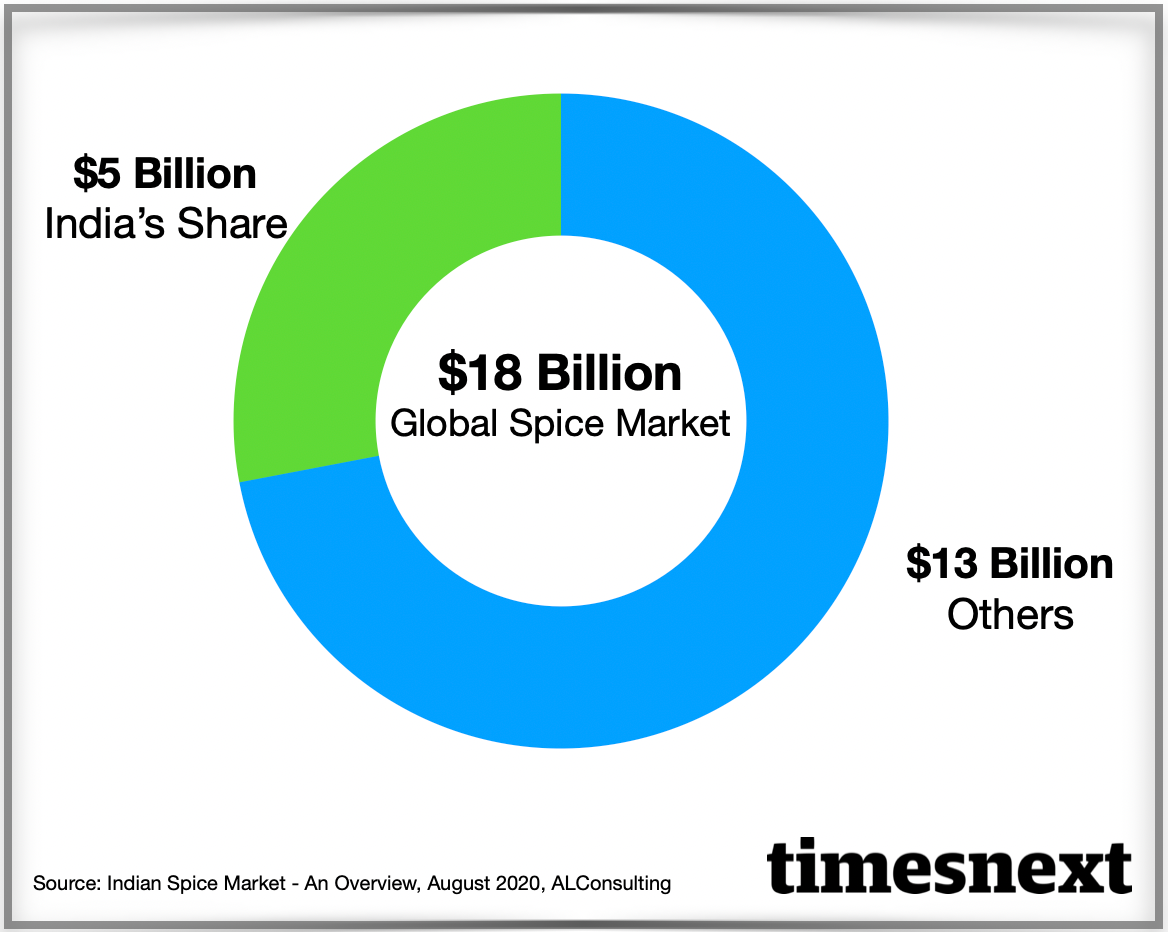
The Indian Spices Industry: A Flavorful Legacy
The subcontinent of India is well known for its spices. It boasts a long history of trading with the ancient civilizations of China and Rome. Today, Indian spices are among the most sought-after worldwide, prized for their exquisite texture, aroma, taste, and medicinal value.
A Spicy Heritage
India has the most prominent domestic spices market globally. Traditionally, Indian spices are grown in small landholdings. The country is also the most significant consumer, producer, and exporter of spices. Notably, India produces over 75 of the 109 spices varieties listed by the ISO, International Organization for Standardization, and makes up almost half of the world’s spice trading[^1^].
Some Flavoursome Indian Spices Data
- In FY 2020, India exported spices worth over 3.62 billion USD.
- In FY 2021, top importers of Indian spices include Hong Kong, the US, UAE, Australia, UK, and Canada.
- India exported over 4 billion USD spices between April 2020 and March 2021, and in March 2021 alone, India exported over 448.77 million USD.
- In April 2021, the value was 398.50 million USD.
- In FY 2020, till December 2019, ginger export had the highest growth of 47%, followed by cardamom with 31%, and cumin with over 14%[^2^].
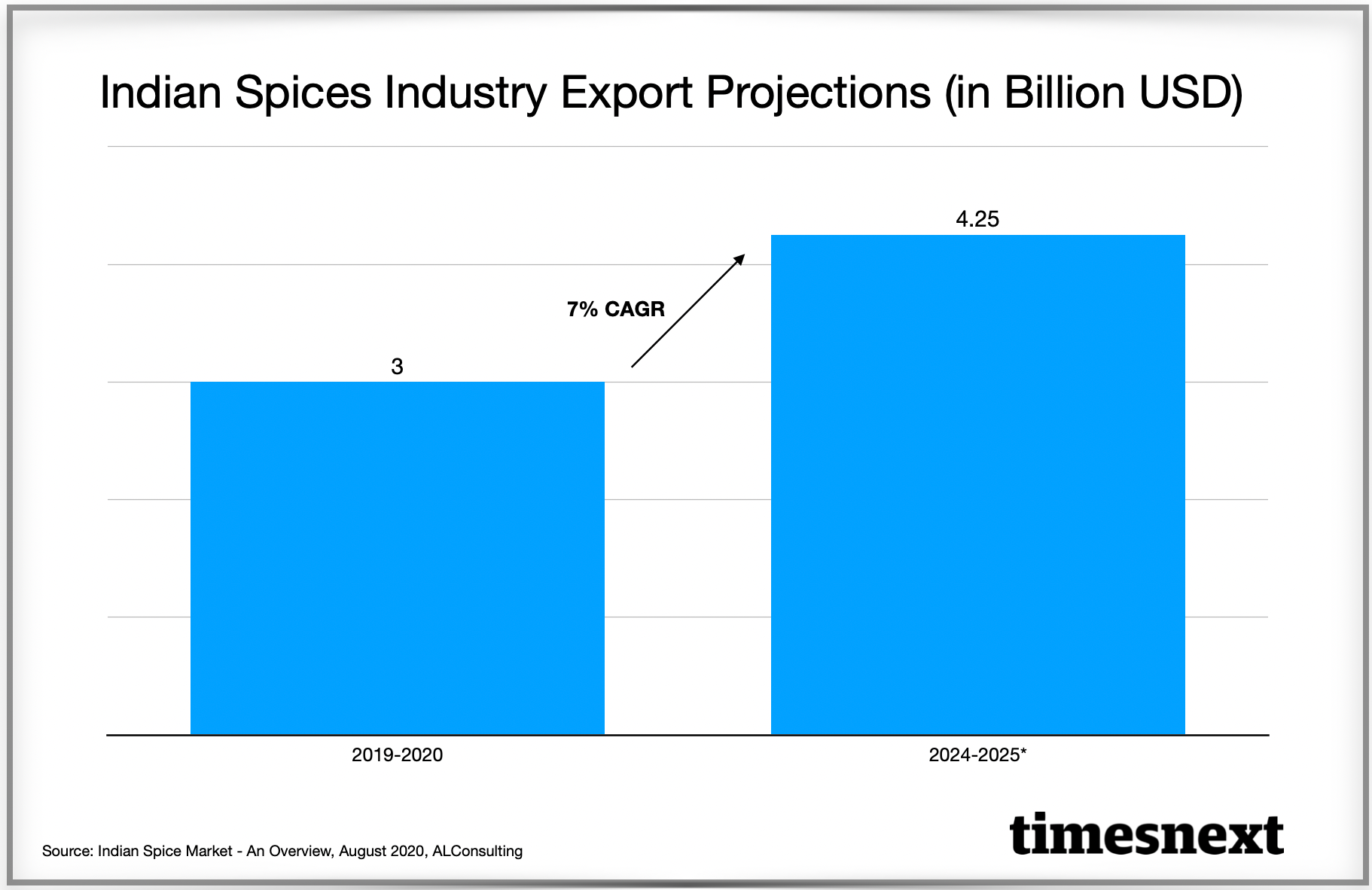
Spice Production Across India
As per the Indian Spices Board, India makes for about 30% of the globe’s pepper production, 35% of ginger, and 90% of turmeric. Among all Indian states, Kerala is at the top of the chart since it produces about 96% of pepper, 53% cardamom, and 25% of ginger in the country. With the production of chili and turmeric, Andhra Pradesh leads the chart with 49% and 57%, respectively. Meanwhile, Rajasthan is the largest producer of cumin, 56%, coriander, 63%, and fenugreek, 87%[^3^].
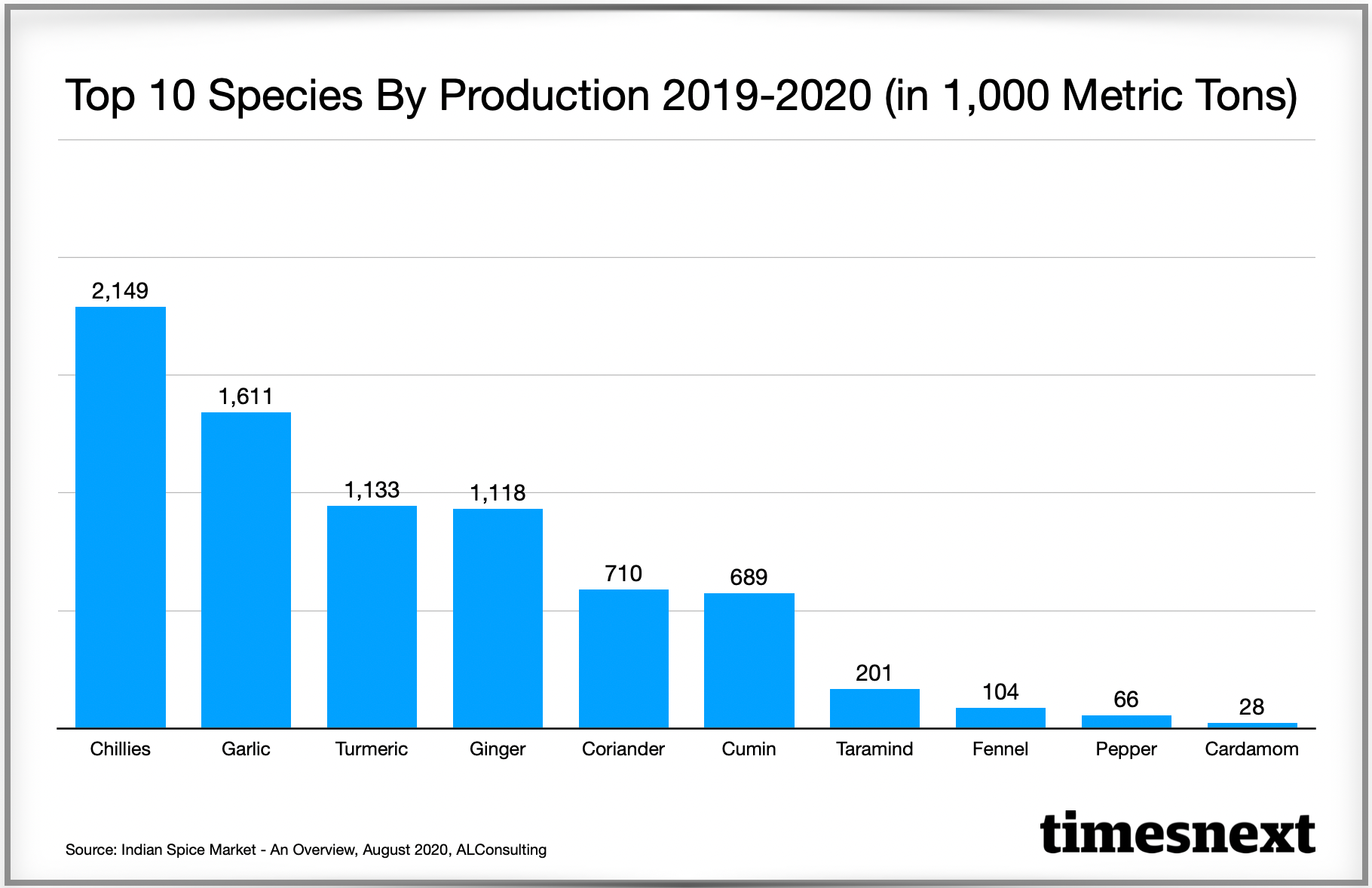
Spice Prices: The Double-Edged Sword
It is also worth pointing out that the surge in the domestic demand for spices has kept their prices high, especially for pepper and chili[^4^][^5^]. Even though it is advantageous for businesses as producers can make money from the local market, producers are losing out in the international markets by keeping the prices high.
Spice Processing and Export
The country produces whole and processed spices and exports the majority of the processed spices to Europe and the US. For instance, Indian pepper producers process them into white pepper, green pepper, and oleoresin before exporting them to European nations. They also carry out sorting, grading, and standardization of spices to improve their quality and earn more revenue.
As per industry experts, despite economic slowdowns in some countries amid the coronavirus pandemic, India has kept the charms of its spices and will continue to be the top producer for several years to come[^6^].
The Outlook of the Spices Market
As per the official sources from the Indian Brand Equity Foundation, during 2017-18, India exported a massive 1.08 billion KG of spices of several types to different nations around the globe. During the same period, the total export market value stood at 3.11 billion USD.
A report on Spices Market 2021-2026 by IndustryARC predicts that between 2019 to 2025, the spices market will continue to witness growth with a 4.80% CAGR because of the increasing demand for spices with the expanding urbanization trend.
In general, spices have several applications, including sauces, bakery products, frozen foods, beverages, dressings, package foods, and more. It has made the food segment one of the most promising areas in the spices market. There are expectations that it would grow at 5.10% CAGR during the same period. Apart from the food and beverage industry, spices’ end users also include pharmaceuticals and cosmetics.
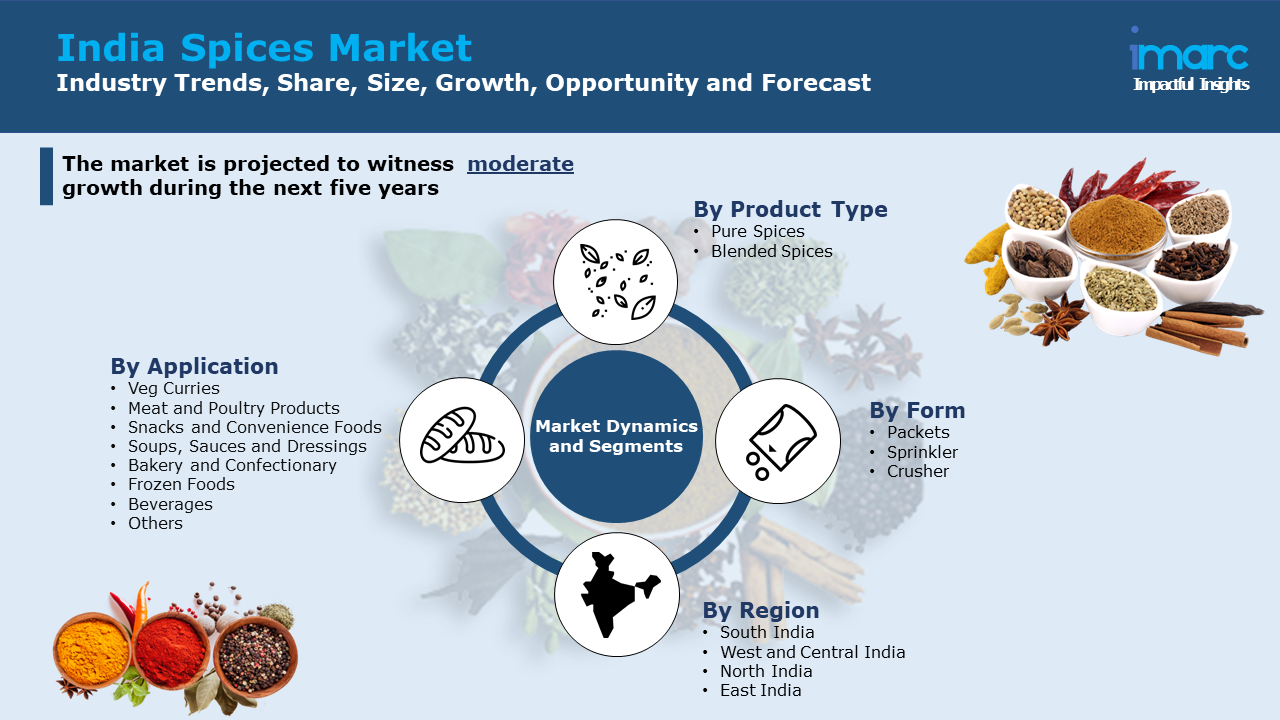
The Major Growth Drivers
Expansion of Globalization
Developed nations like the United Kingdom and Canada have become more accepting, and with increased immigrants, globalization has reached a new pinnacle[^8^].
Food and Beverage Industry
The food and beverage industry is the most significant end-user of spices worldwide. With the surge of disposable income, the urban population and the working class, in general, are more willing to eat in restaurants and experience different cuisines.
Frozen and packaged food also uses spices to make food more appealing while preserving it for a long time. It has contributed significantly to the overall market growth of spices and would define its direction in the upcoming years[^9^].
The Transformation of the Indian Spices Industry and the Impact of Pandemic
Even though the food and grocery market didn’t face the same horror as the non-essential retailers during the coronavirus pandemic, the industry too was influenced by the pandemic and the subsequent lockdown. Although things have started to normalize, the fear of the infection is still there, and businesses across the FMCG segment are compelled to make significant overhauls in how they make and retail their products.
Similar to other markets, the Indian spices industry was no exception. It has also witnessed significant disruption over the last few months. Consequently, businesses operating in the industry were also compelled to streamline their brand portfolio and innovate in all aspects of their operations, from product development to marketing and in-store services. To appeal to consumers, they have now become more discerning than ever.
Similar to other industries, the spice industry has also started to rely on automated processes to enhance food safety and address labor issues[^10^].
The Sweet Spices Business Scope
In India, starting a spices business is lucrative as the country has an abundance of spices, and the demand for them is never likely to go down. Businesses can work directly with spice producers and sell them in retail, wholesales, and even online[^15^][^16^].
Opportunities
Besides the obvious, there is an abundance of opportunities for those looking to profit from the lucrative market:
- Regulatory and Licensing: Help businesses with the various registrations and licenses required.
- Machinery and Equipment: Assist businesses in selecting machines with the latest technologies.
- Eco-friendly Fertilizers and Pesticides: Offer eco-friendly agrochemicals.
- Fintech for Small-scale Spices Producers: Support small-scale farmers with financial troubles.
- Marketing: Develop innovative marketing strategies.
- DIY Uses of Spices: Promote the cosmetic and medicinal properties of spices[^18^].
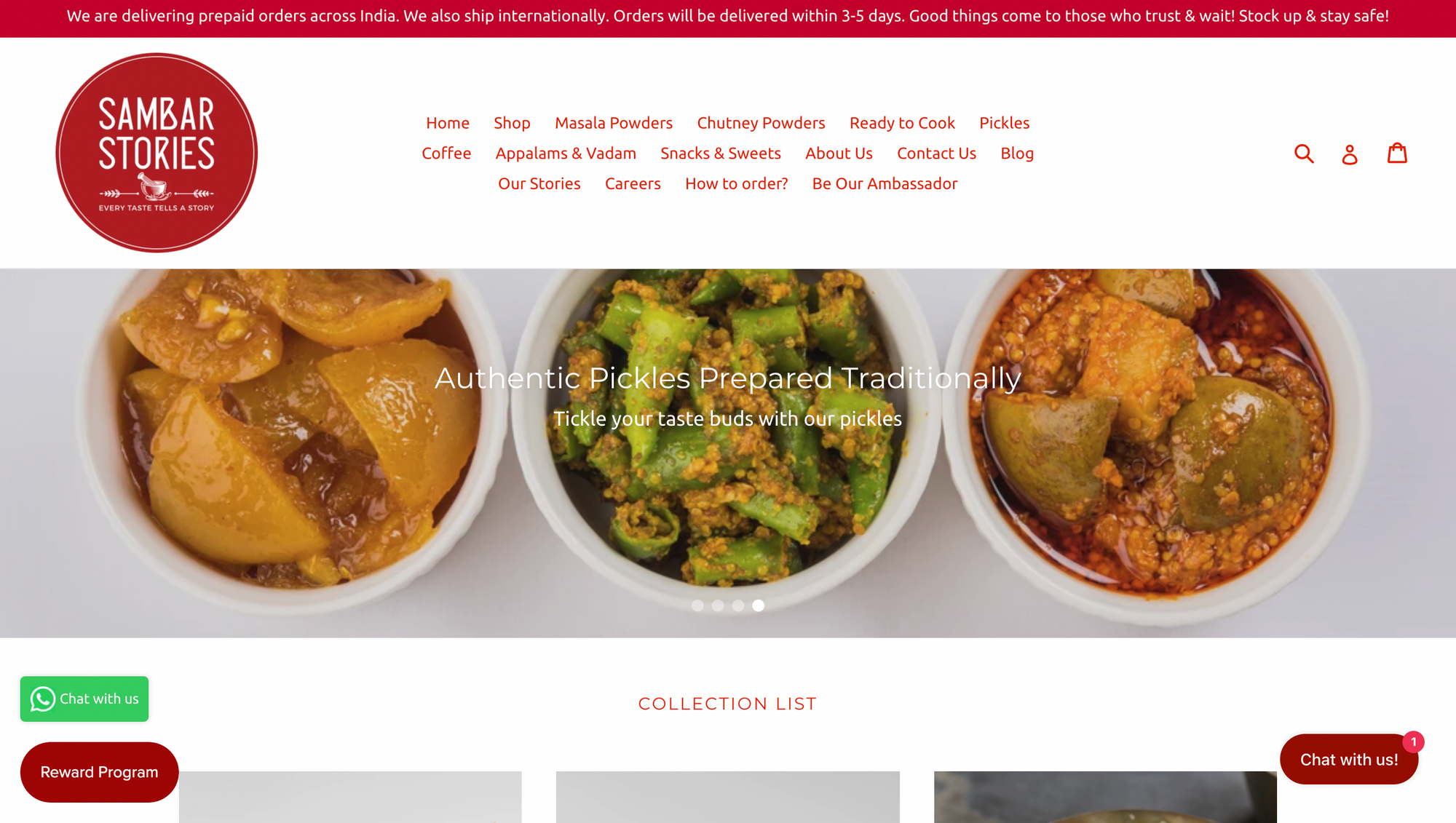
Wrapping Up
The spice industry in India is undergoing rapid innovation, relying on technology for manufacturing, product development, and marketing. As it adjusts to the new normal, it presents numerous challenges and opportunities for businesses and entrepreneurs. From processing and selling spices to offering regulatory support and eco-friendly solutions, the Indian spices industry is indeed getting spicier in more ways than one.
FAQs
Q: What are the most popular spices from India? A: India is renowned for spices like cardamom, cinnamon, turmeric, cumin, and coriander.
Q: How has globalization impacted the Indian spices industry? A: Globalization has expanded the market for Indian spices, making them accessible to consumers worldwide.
Q: Are Indian spices grown sustainably? A: Many spice farmers in India have adopted sustainable farming practices to protect the environment and ensure the long-term viability of spice cultivation.
Q: What role does technology play in the Indian spices industry? A: Technology is helping spice producers improve efficiency, reduce waste, and maintain the quality of their products.
Q: How can tourists experience the Indian spices industry? A: Spice tourism allows tourists to visit spice farms, witness the cultivation and processing of spices, and immerse themselves in Indian culinary traditions.
Q: How is Indian cuisine evolving with the changing spice industry? A: Indian cuisine is evolving through creative experimentation with spice combinations, resulting in exciting fusion dishes.
Conclusion
The Indian spices industry is indeed getting spicier, not just in terms of flavors but also in innovation, sustainability, and global reach. As it embraces new opportunities and adapts to changing consumer preferences, it continues to be a vibrant and integral part of India’s cultural and culinary heritage.
So, if you’re a spice enthusiast or simply someone who enjoys the incredible flavors of Indian cuisine, keep an eye on the ever-evolving Indian spices industry. It’s a journey that promises to delight your senses and tantalize your taste buds.





